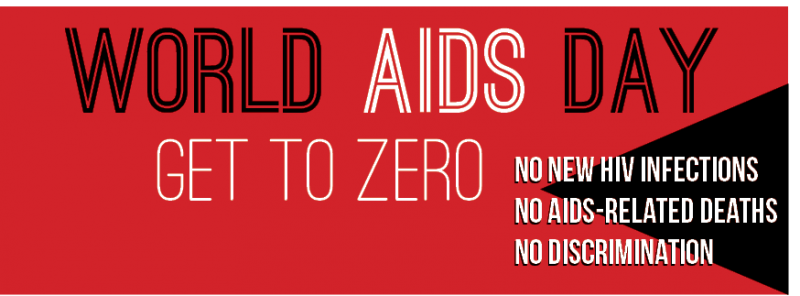Getting to Zero: World AIDS Day highlights possibility of AIDS eradication
According to Time magazine, at the height of the AIDS epidemic, 50,000 people died from an AIDS related disease per year (2014). By 1988, AZT, the first antiretroviral drug, had been approved by the FDA; Rock Hudson, a major leading man of the time, died of AIDS-related diseases; Time magazine reported that the “isolation and personal rejection” was the worst part of the disease; and HIV was found to be transmitted through all types of sexual contact, homosexual and heterosexual (Time, 2014; Advert, 2015).
Also, in 1988, the First World AIDS Day took place on December 1st with a clear message: Talk about HIV/AIDS. The conception of World AIDS Day began in 1987 with two public information officials at the World Health Organization, James Bunn and Thomas Netter, who wanted to bring HIV/AIDS to the forefront of discussion. Since then, the World celebrates World AIDS Day with a new theme every year. This year’s theme is “Getting to Zero” (Minnesota Department of Health, 2015). A dream that, finally, feels possible.
The number of AIDS-related deaths has dropped to 15,000 a year on average and the number infected each year has stabilized at 50,000 a year with 1 million people living with HIV in the US (Time, 2014). The introduction of drugs such as PrEP, a pre-exposure drug at-risk individuals can take that is over 90% effective in stopping the transmission of HIV, and the discovery that persons with an undetectable viral load cannot transfer the virus allows scientists and public health workers to believe that HIV is a virus that could be on the way out (Human Rights Campaign, 2011).
We have come a long way since 1981 in understanding how the disease is transmitted and treated. New drugs allow for those with the disease to live happy and healthy lives. A reality that was not possible less than 30 years ago. Yet, to truly end the disease, acceptance and education is needed.
We are finding a large cluster of infections comes from southern states, where a strong down low culture stops men from getting tested and using condoms regularly. Down low refers to men, generally African American, who lead heterosexual lives while engaging in sexual acts with other men discretely. According to a New York Times article, men on the DL do not use condoms because it means that they would have to admit to themselves that they are having sex with a man, that it was a planned act. These men are in a limbo. They do not want to lose their black identity and, furthermore, do not feel they fit into the current, mostly-white gay culture. They must choose between racism from leaving the confines of black society or homophobia from outing themselves in their community. There was also a large misconception that HIV was a white disease, which stopped black leaders from mobilizing the same way white leaders did in the eighties. Misconceptions, similar to those in the 1980’s, of the virus still exist today (Denizet-Lewis, 2003).
Working with young girls during education sessions, I find that many know very little about sex and sexually transmitted infections (STIs). Many believe that HIV is spread through saliva, and many do not know how to put on a condom. Comprehensive and complete HIV education is the only way to limit the spread among the younger generation, the only group recently that has seen an increase in number of infections (CDC, 2009).
We can be the generation that sees the end of HIV but it takes everyone, working together towards a common goal. So, this December 1st, wear your red ribbons, get tested, and help us to get to zero – zero deaths and zero infections.

World AIDS Day Events in Pittsburgh You Can Attend:
World AIDS Day Commemoration service – December 1st
McKeesport Collaborative On the Street Hot Dog Cookout – December 1st
Urban League World AIDS Day – December 2nd
Pittsburgh AIDS Task Force PrEP Rally – December 10th